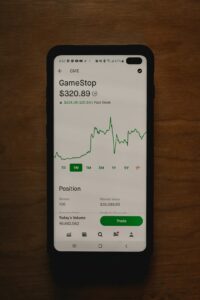How to Calculate Drawdown in Forex Trading and Why It Matters
Forex trading can be an exciting and potentially profitable venture, but it also comes with its fair share of risks. To navigate these risks effectively, traders need to understand and manage their drawdown. Drawdown is a key metric that measures the peak-to-trough decline in an investment’s value during a specific period. It is an essential concept in forex trading, as it provides valuable insights into a trader’s risk tolerance and the potential losses they may incur.
Calculating drawdown in forex trading is relatively straightforward. To determine the drawdown, you need to identify the highest point your account balance reached and measure the subsequent decline from that peak. The formula for calculating drawdown is as follows:
Drawdown = (Peak Value – Current Value) / Peak Value * 100
For example, if your account balance reached a peak of $10,000 but has since declined to $8,000, the drawdown would be calculated as:
Drawdown = ($10,000 – $8,000) / $10,000 * 100 = 20%
In this case, the drawdown would be 20%, indicating that your account has experienced a 20% decline from its highest point.
Understanding the concept of drawdown is important for several reasons. Firstly, it provides a clear picture of the potential losses that traders may face during their forex trading journey. By quantifying the maximum decline in account value, drawdown allows traders to assess their risk tolerance and set appropriate risk management strategies.
Secondly, drawdown helps traders evaluate the performance of their trading strategies. A high drawdown may indicate that the trading strategy employed carries significant risks and may not be suitable for the trader’s risk appetite. On the other hand, a lower drawdown suggests a more conservative approach, which may appeal to traders looking for a steadier and less volatile trading experience.
Furthermore, drawdown is closely related to another important metric in forex trading known as the risk-to-reward ratio. The risk-to-reward ratio assesses the potential profit of a trade against the potential loss. By considering both the drawdown and the risk-to-reward ratio, traders can optimize their trading strategies to maximize potential gains while minimizing potential losses.
Managing drawdown effectively requires a combination of risk management techniques and a disciplined approach to trading. Here are a few strategies to help minimize drawdown:
1. Use proper position sizing: Traders should only risk a small percentage of their account balance on each trade. This helps limit potential losses and prevents a significant drawdown.
2. Set stop-loss orders: Implementing stop-loss orders is crucial in limiting losses. A stop-loss order automatically closes a trade when it reaches a predetermined price level, preventing further losses if the market moves against the trader’s position.
3. Diversify your portfolio: A diversified portfolio spreads the risk among different currency pairs, reducing the impact of drawdown in case of adverse market movements.
4. Regularly review and adjust your trading strategy: Monitoring and analyzing your trading strategy regularly is essential to identify any flaws or weaknesses. Adjusting your strategy based on market conditions and optimizing risk management techniques can help prevent excessive drawdowns.
In conclusion, drawdown is a critical metric in forex trading that measures the decline in account value from its highest point. It provides valuable insights into a trader’s risk tolerance and the potential losses they may incur. By understanding how to calculate and manage drawdown effectively, traders can optimize their strategies, minimize losses, and increase the likelihood of long-term success in the forex market.






